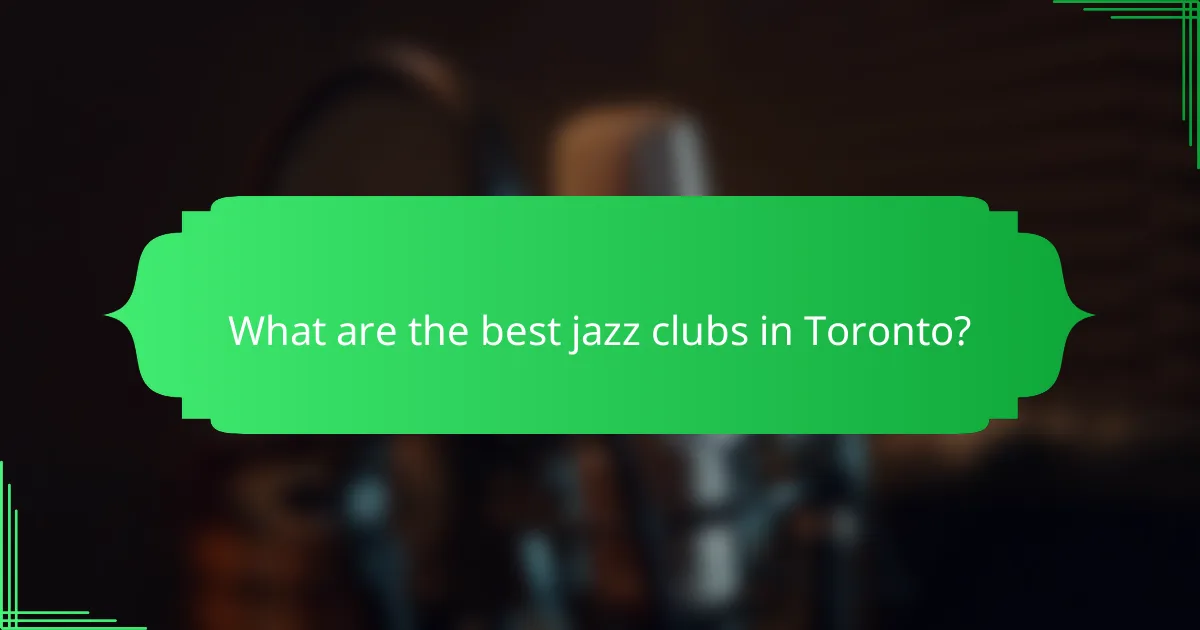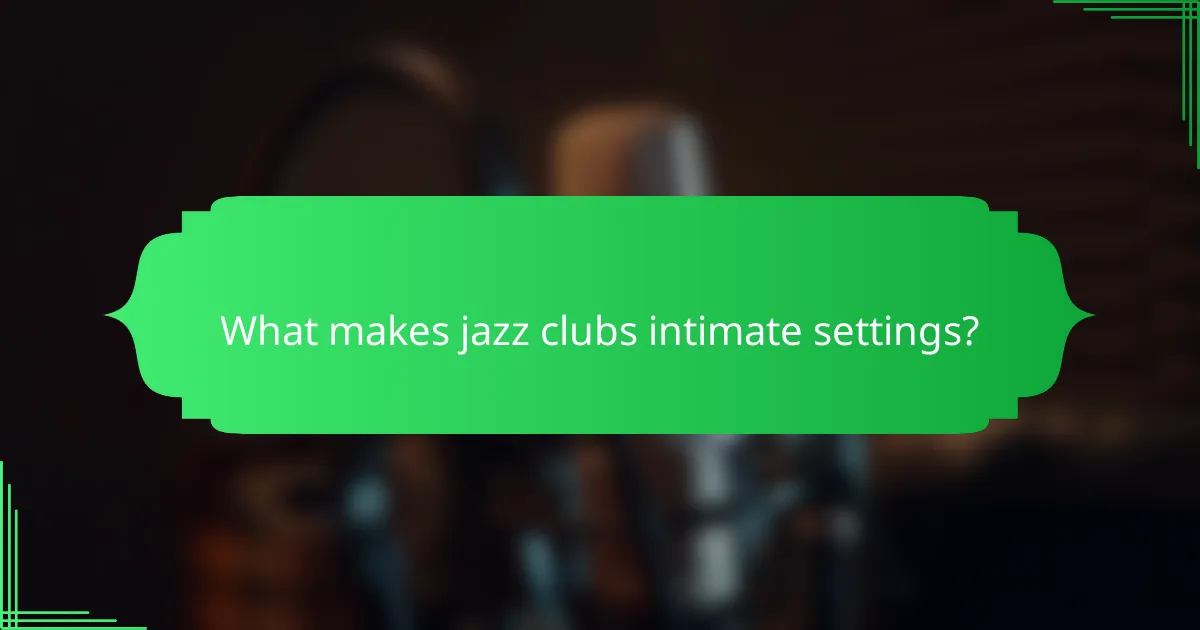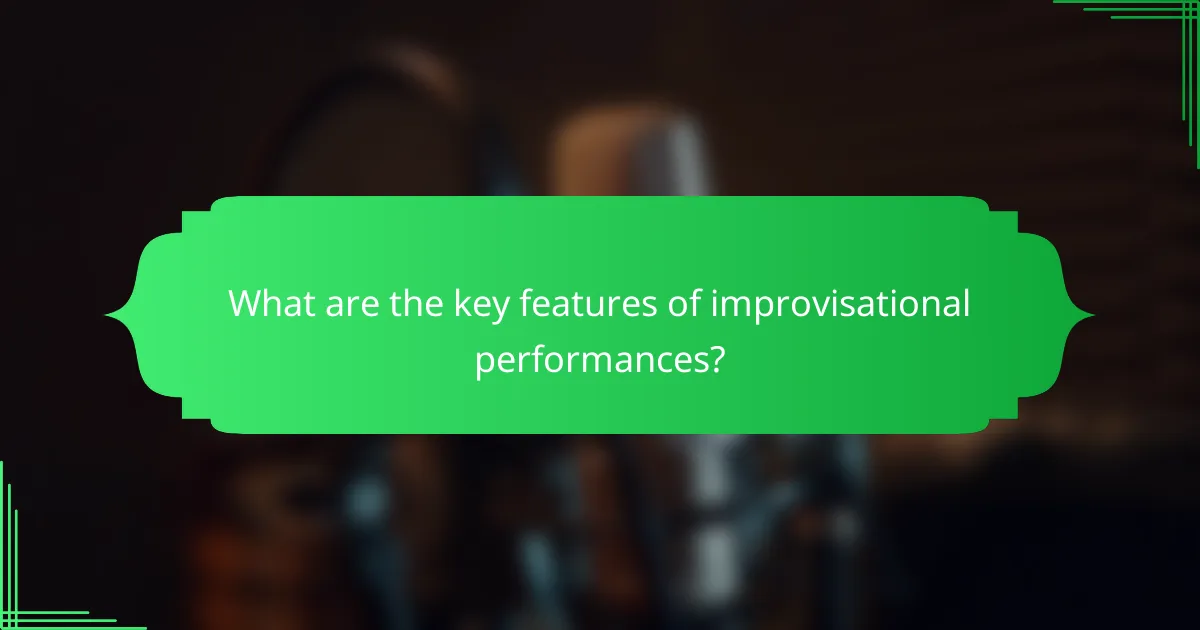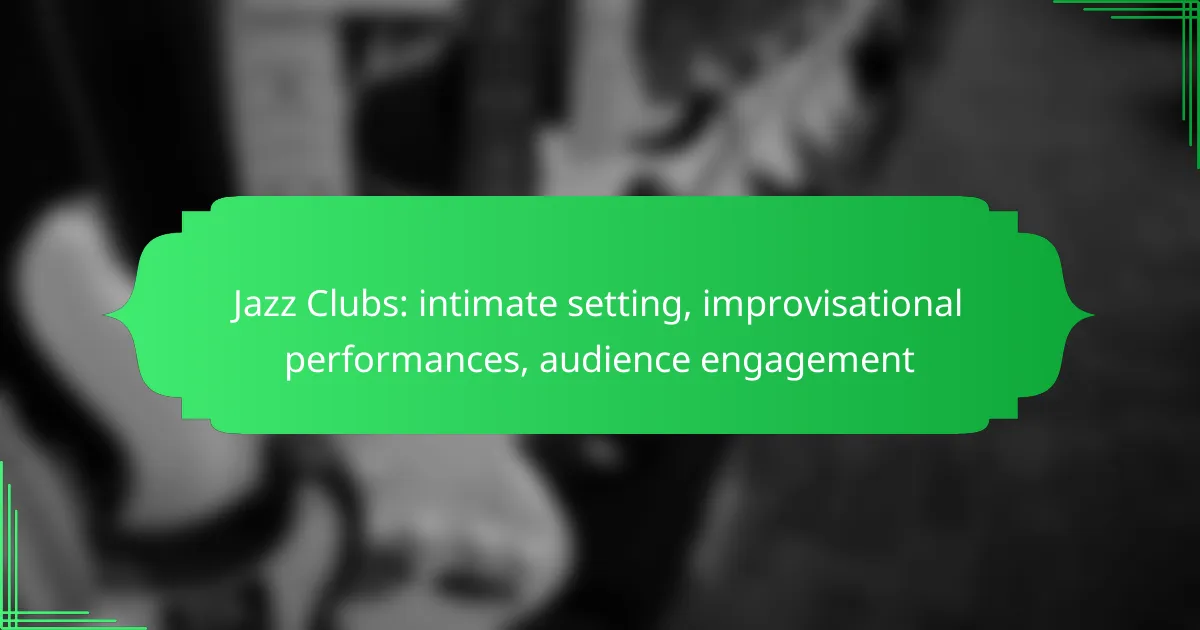Jazz clubs provide an intimate setting that enhances the connection between performers and the audience, creating a unique atmosphere for live music. With cozy surroundings and opportunities for audience engagement, these venues allow for improvisational performances that feel personal and immersive, making each visit a memorable experience.

What are the best jazz clubs in Toronto?
Toronto boasts a vibrant jazz scene with several clubs known for their intimate settings and engaging performances. The best jazz clubs offer a mix of live music, cozy atmospheres, and opportunities for audience interaction.
The Rex Hotel Jazz & Blues Bar
The Rex Hotel Jazz & Blues Bar is a staple in Toronto’s jazz scene, renowned for its lively performances and welcoming atmosphere. With live music every night, it features both local talent and touring artists, making it a great spot for jazz enthusiasts.
The venue offers a casual dining experience with a menu that includes a range of comfort foods and drinks. Expect to pay around $10 to $20 for cover charges, depending on the artist performing.
Jazz Bistro
Jazz Bistro combines fine dining with exceptional live jazz performances, creating a unique experience for patrons. Located in the heart of downtown, it hosts a variety of artists, from emerging talents to established musicians.
The intimate setting allows for close interaction with performers, enhancing the overall experience. Reservations are recommended, especially on weekends, and cover charges typically range from $15 to $30.
Hugh’s Room Live
Hugh’s Room Live is known for its eclectic programming and intimate performances, often featuring a mix of jazz and other genres. The venue emphasizes audience engagement, making it a favorite for those who appreciate a personal touch in live music.
With a menu that highlights local ingredients, guests can enjoy a meal while soaking in the music. Cover charges usually vary from $20 to $40, depending on the event.
Emmet Ray
Emmet Ray is a cozy jazz bar that offers a relaxed vibe and a strong focus on improvisational performances. The club features a rotating lineup of talented musicians, often showcasing unique collaborations.
With a small capacity, it provides an intimate setting where audience members can feel connected to the music. Cover charges are generally low, often around $10, making it an accessible option for jazz lovers.
Poetry Jazz Cafe
Poetry Jazz Cafe blends poetry and jazz, creating a distinctive cultural experience. This venue hosts open mic nights and showcases local artists, encouraging audience participation and engagement.
The atmosphere is casual, making it a great place for newcomers to the jazz scene. Cover charges are usually minimal, often around $5 to $15, depending on the event, making it an affordable choice for an evening out.

How do jazz clubs enhance audience engagement?
Jazz clubs enhance audience engagement by creating an intimate atmosphere that encourages interaction between performers and attendees. This unique setting fosters a connection that elevates the overall experience, making each performance feel personal and immersive.
Interactive performances
Interactive performances in jazz clubs often involve musicians responding to the audience’s energy and feedback. This dynamic exchange can lead to spontaneous improvisation, where artists adjust their music based on the crowd’s reactions. Such performances create a vibrant atmosphere, making each show distinct and memorable.
For example, a musician might notice a particularly enthusiastic response to a specific melody and choose to extend that section, inviting the audience to engage more deeply. This level of interaction transforms a standard concert into a shared experience.
Audience participation opportunities
Jazz clubs frequently offer opportunities for audience participation, allowing attendees to feel like part of the performance. This can include sing-alongs, clapping along to the rhythm, or even inviting audience members to join musicians on stage for a jam session. These moments not only enhance engagement but also break down barriers between performers and spectators.
Some clubs may host open mic nights or themed events where audience members can showcase their talents, further enriching the community atmosphere. It’s essential for clubs to create a welcoming environment that encourages participation while respecting the musicians’ space and performance flow.

What makes jazz clubs intimate settings?
Jazz clubs are known for their intimate settings, characterized by close proximity between performers and the audience, creating a unique atmosphere that enhances the musical experience. This intimacy fosters a deeper connection between the musicians and the listeners, making each performance feel personal and engaging.
Cozy atmospheres
The cozy atmosphere of jazz clubs is often achieved through dim lighting, comfortable seating, and tasteful decor. These elements work together to create a warm and inviting space where patrons can relax and enjoy the music. Many clubs incorporate soft furnishings and acoustic treatments to enhance sound quality while maintaining a laid-back vibe.
Additionally, the ambiance is often complemented by the presence of food and drink, with many venues offering a selection of cocktails and small plates. This encourages patrons to linger, fostering a sense of community and shared enjoyment among the audience.
Small venue sizes
Small venue sizes are a hallmark of jazz clubs, typically accommodating anywhere from a few dozen to a couple of hundred guests. This limited capacity allows for a more personal experience, where audience members can feel the energy of the performance up close. It also enables musicians to interact directly with their listeners, enhancing the improvisational nature of jazz.
Moreover, the intimate setting of smaller venues often leads to a more spontaneous atmosphere, where unexpected moments can occur. Musicians may engage with the audience, take requests, or even invite guests to join them on stage, creating memorable experiences that larger venues may not offer.

What are the key features of improvisational performances?
Improvisational performances in jazz are characterized by spontaneous musical creation, where musicians express their creativity in real-time. This dynamic form of performance emphasizes individual expression while maintaining a cohesive sound with the group.
Spontaneity in music
Spontaneity is the essence of improvisational jazz, allowing musicians to create unique melodies and harmonies on the spot. This unpredictability keeps performances fresh and engaging, as no two renditions of a piece are ever the same.
Musicians often rely on their instincts and emotional responses to guide their playing, which can lead to unexpected musical directions. For instance, a soloist might shift the mood from upbeat to reflective based on the audience’s energy or the ensemble’s interaction.
Collaboration among musicians
Collaboration is crucial in improvisational performances, as musicians must listen and respond to each other in real-time. This interaction fosters a sense of unity and shared creativity, where each member contributes to the overall sound.
During a performance, musicians often engage in call-and-response patterns, where one musician plays a phrase and others reply with complementary ideas. This back-and-forth can enhance the emotional depth of the music and create a richer listening experience for the audience.

How to choose the right jazz club experience?
Choosing the right jazz club experience involves considering the type of music you enjoy, the venue’s atmosphere, and any special events that may enhance your visit. A well-selected club can provide an intimate setting that fosters engagement with the performers and fellow audience members.
Consider the music genre
Different jazz clubs may specialize in various sub-genres, such as bebop, smooth jazz, or fusion. Knowing your preferred style can significantly enhance your experience, as each genre offers a unique vibe and performance style.
For instance, if you enjoy the improvisational nature of bebop, look for clubs that feature artists known for their spontaneous creativity. Conversely, if you prefer a laid-back atmosphere, seek out venues that focus on smooth jazz or vocal performances.
Evaluate the venue’s ambiance
The ambiance of a jazz club plays a crucial role in your overall experience. Look for venues that provide an intimate setting, with dim lighting and comfortable seating arrangements that encourage audience engagement.
Consider the size of the club as well; smaller venues often allow for a closer connection with the musicians, while larger spaces may offer a more energetic atmosphere. Pay attention to the decor and acoustics, as these elements can greatly affect your enjoyment of the performance.
Check for special events
Many jazz clubs host special events, such as themed nights, guest performances, or jam sessions, which can add excitement to your visit. Research the club’s calendar to find out if any notable artists or unique events are scheduled during your intended visit.
Participating in a jam session can be particularly engaging, as it allows for interaction between musicians and the audience. Additionally, some clubs may offer workshops or masterclasses, providing an opportunity to learn more about jazz music firsthand.
